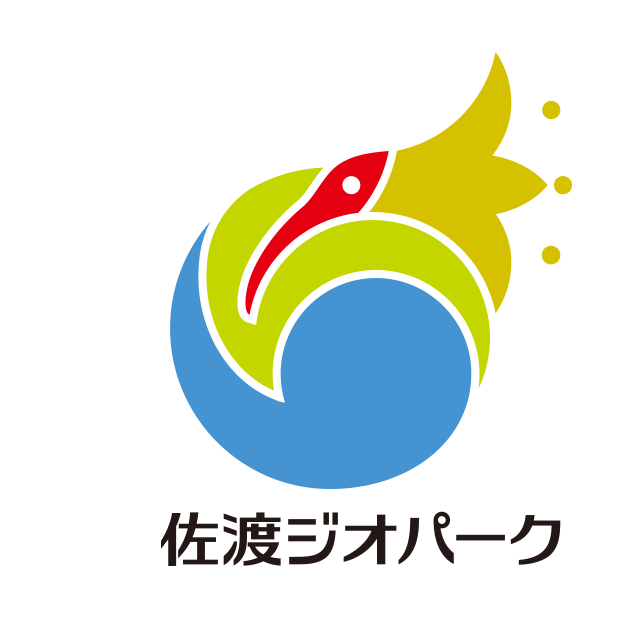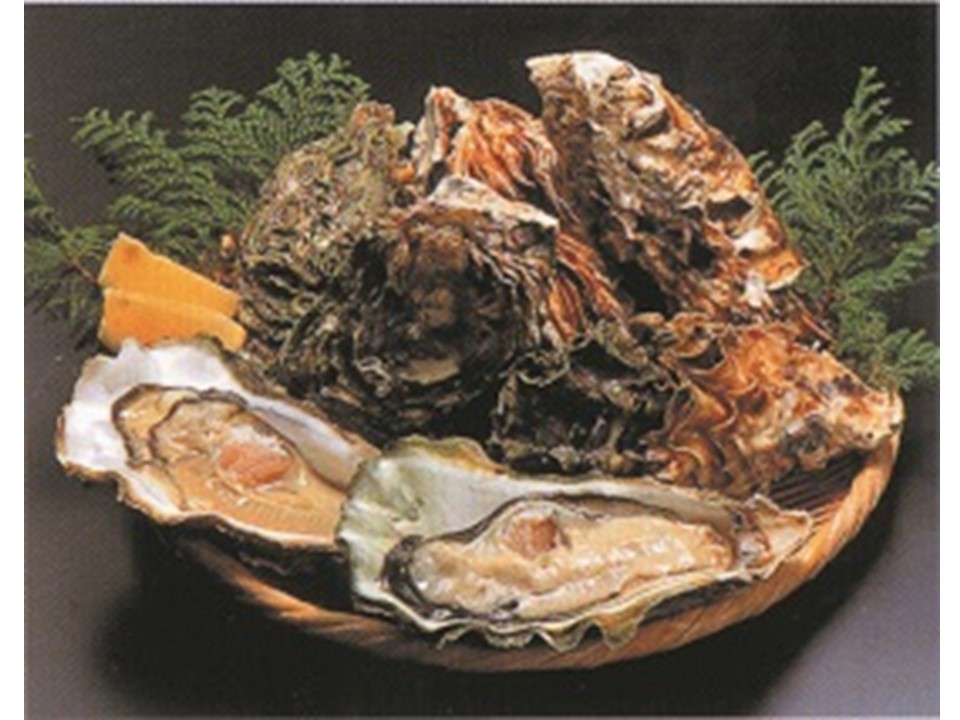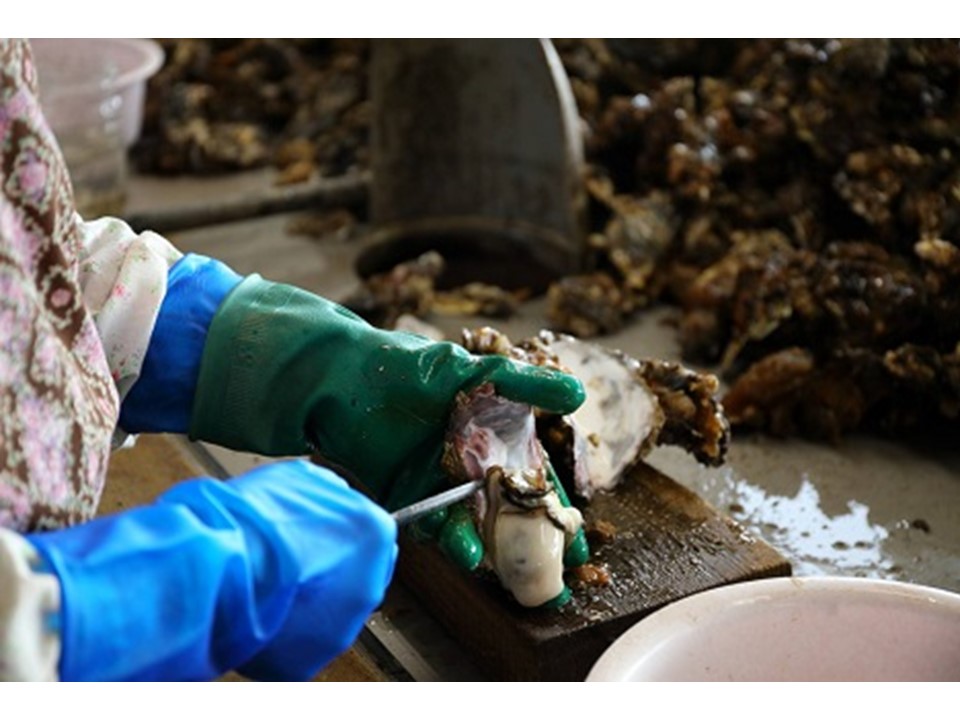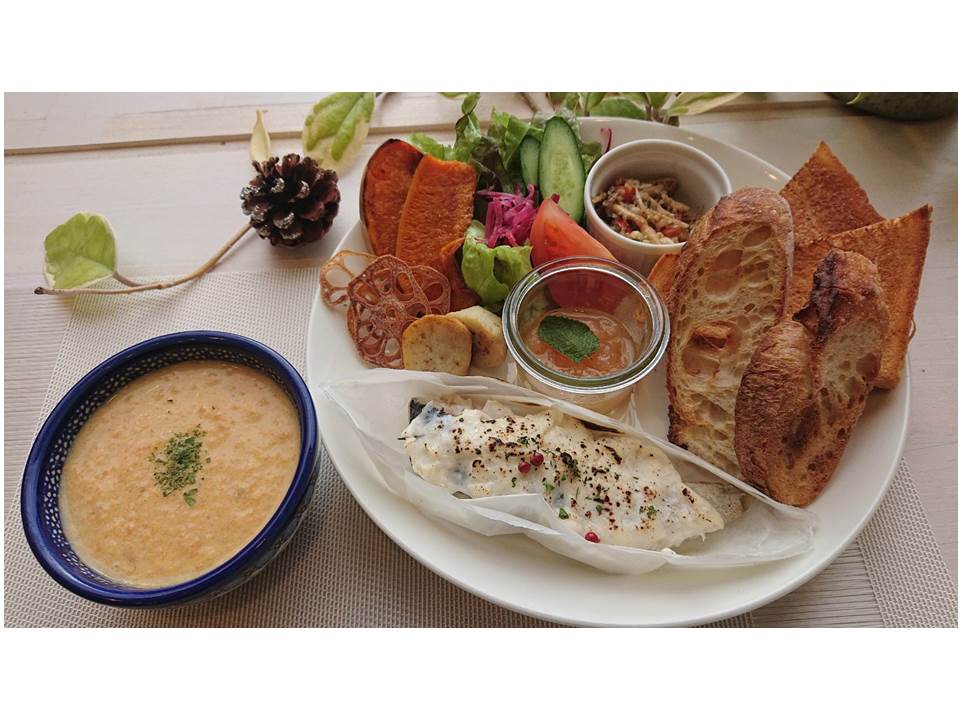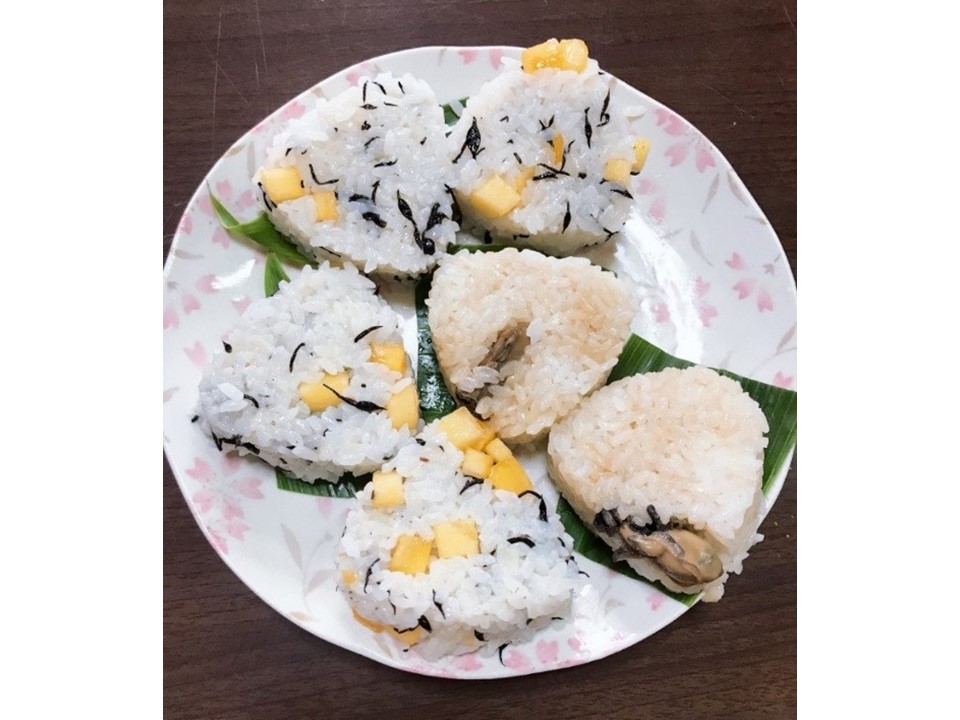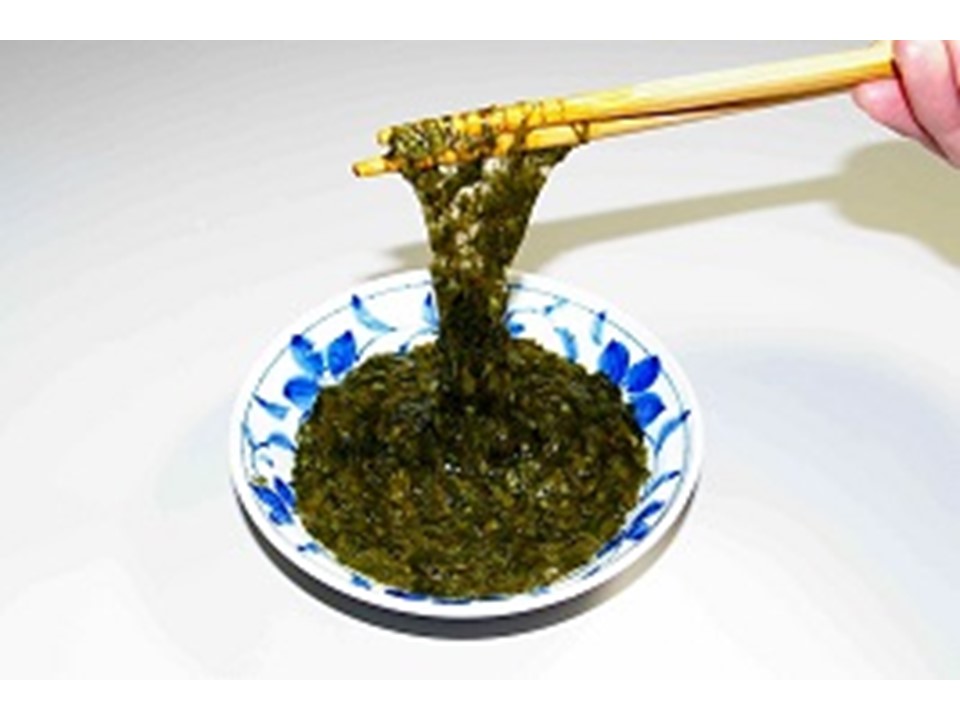Sado Island Geopark Foods
Here, you will find local specialties with a connection to the history of Sado Island, its natural environment, and its inhabitants' lives. Of course, we will talk about the history of Sado Island Geopark.
We invite you to enjoy these Sado Island Geopark foods.
Oyster
The Origins of Oyster
There are two types of oysters farmed on Sado: iwagaki (lit. “rock oysters”), which are in season in summer, and magaki oysters, which are in season in winter. Magaki Oysters are cultivated in Lake Kamo, Ryotsu and Sawane, Sawata. Oysters tend to prefer brackish waters where freshwater and seawater mix, and Lake Kamo provides just such an environment. Lake Kamo was formed by a sandbar partitioning the inner part of Ryotsu Bay. What was once salt water in the Yayoi period gradually thinned out and became a freshwater lake after the Heian period. In the Meiji period, villagers were troubled as run-off from melted mountain snow caused the lake to overflow annually and flood the surrounding rice fields. To remedy this, they dug a wide and deep bed, creating a river that connected the lake and the sea. As a result, the flooding was ebbed, and seawater flowed in and made the lake brackish. Oysters, clams and prawns began to thrive in Lake Kamo.
Characteristics
There are two types of oysters farmed on Sado: iwagaki (lit. “rock oysters”), which are in season in summer, and magaki oysters, which are in season in winter. Magaki Oysters are cultivated in Lake Kamo, Ryotsu and Sawane, Sawata. Oysters tend to prefer brackish waters where freshwater and seawater mix, and Lake Kamo provides just such an environment. Lake Kamo was formed by a sandbar partitioning the inner part of Ryotsu Bay. What was once salt water in the Yayoi period gradually thinned out and became a freshwater lake after the Heian period. In the Meiji period, villagers were troubled as run-off from melted mountain snow caused the lake to overflow annually and flood the surrounding rice fields. To remedy this, they dug a wide and deep bed, creating a river that connected the lake and the sea. As a result, the flooding was ebbed, and seawater flowed in and made the lake brackish. Oysters, clams and prawns began to thrive in Lake Kamo.
